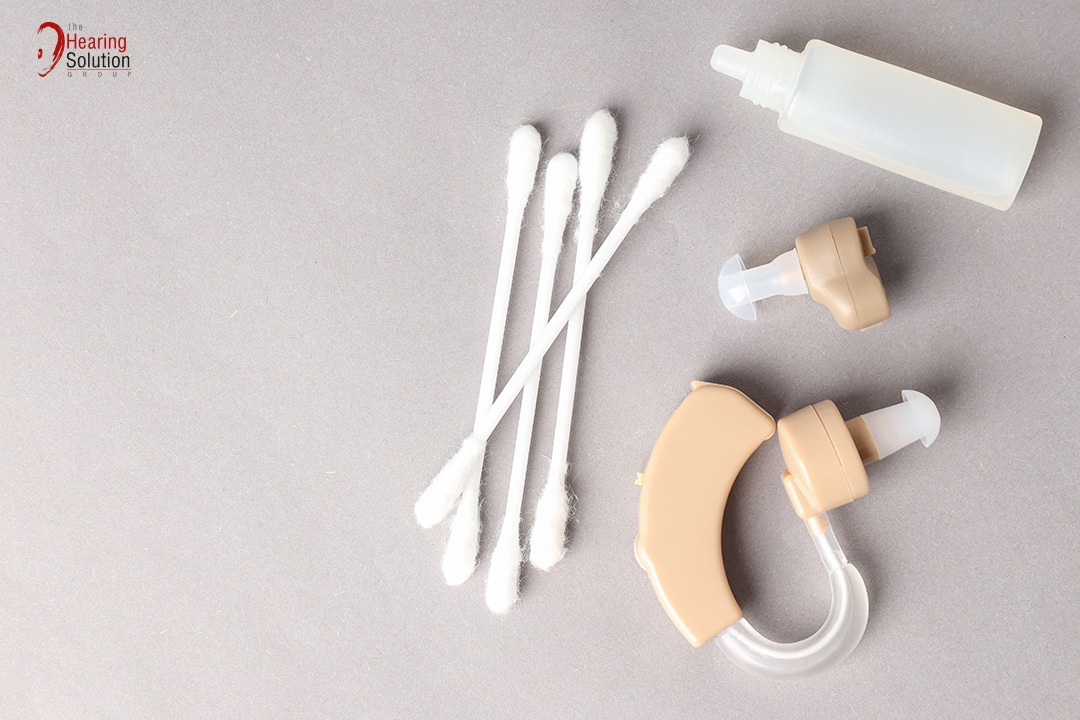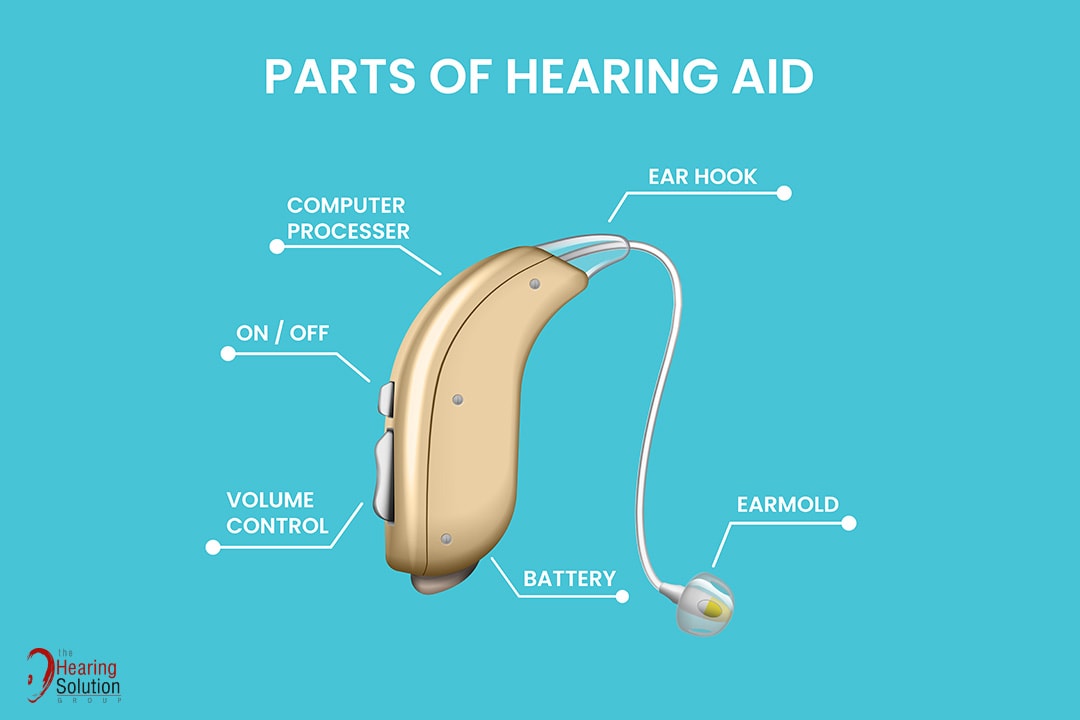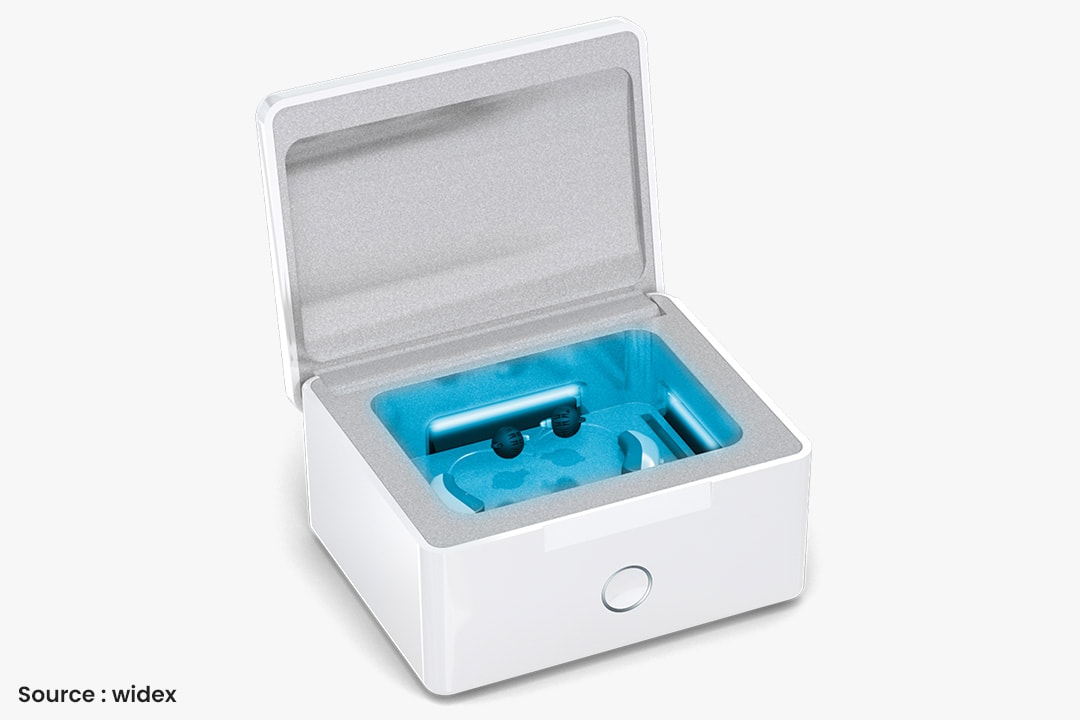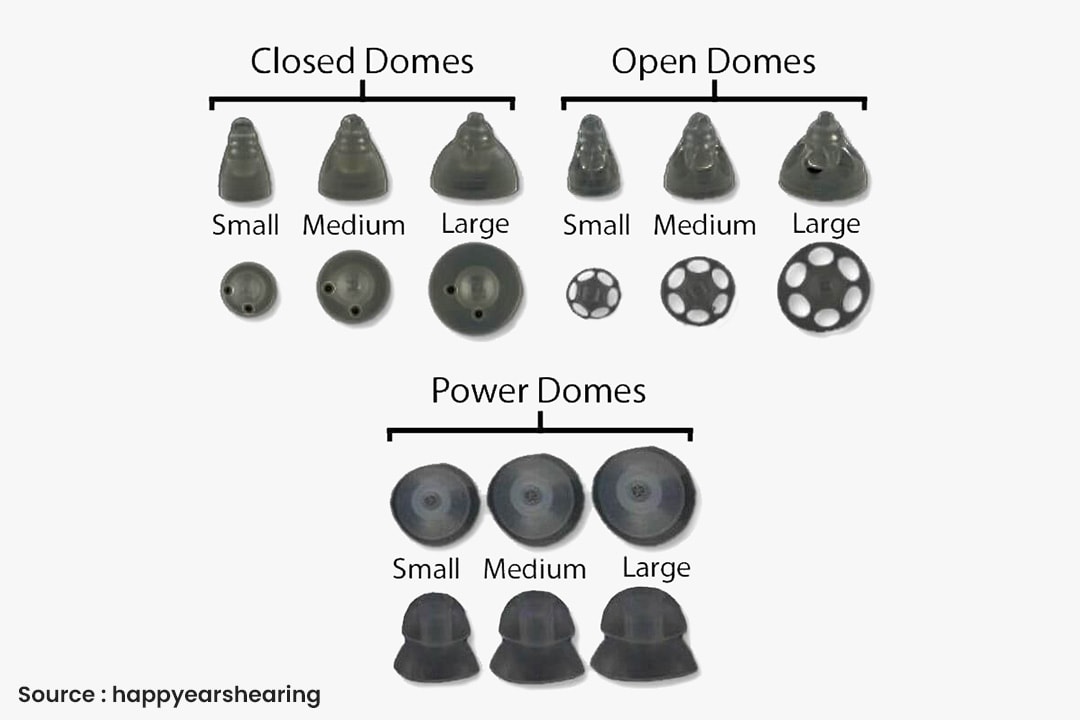
Hearing aids today are powered by incredible technology and function much like mini-computers to help those with hearing loss hear better. Despite their small size and simple design, hearing aids are packed with great features and can be extremely useful in assisting the hearing impaired in leading a comfortable life with minimal disruption to their daily lives and cognitive abilities.
If you or someone you know needs to wear a hearing aid, it is important to find out how do hearing aids work and understand more about their components so that you can troubleshoot these devices if a problem arises. Read on to find out more.
Parts of a Hearing Aid
There are three important parts to a hearing aid — microphone, amplifier and speaker. Each of these parts play a crucial role in helping someone hear sounds better.
The microphone picks up sounds in the environment and converts them into a digital signal, which is then sent to the amplifier; they can typically distinguish between speech and background noise. The received sound is then amplified in the amplifier and transferred to the speaker. The speaker then produces the amplified sound into the ear.
Hearing aids are classified into two types. The analogue hearing aid is a conventional model that has been used in the past, whereas digital hearing aids are newer and more advanced models.
Analogue hearing aids convert sound waves into electrical signals, which are then amplified and delivered to the listener’s ears. They may convert any type of sound, regardless of frequency or volume, resulting in poor sound quality. However, adjustments can be made by an audiologist.
In contrast, digital hearing aids convert sounds into numerical codes that contain information about the pitch and loudness of a sound. The amplifier then amplifies the sound according to the frequency, with some amplified more than others to create the most accurate sound. Some digital hearing aids can be adjusted with a mobile app to help the listener hear better in different situations.
Hearing aid batteries are another important component of the device. They provide power to the hearing aids and can either be recharged or discarded and replaced. Hearing aid batteries come in a variety of sizes and are differentiated by a standardised colour coding system to help users in finding the correct type of battery easily. We suggest bringing spare batteries wherever you go so you can keep your hearing aids running without interruption.
Hearing Aid Accessories
Hearing aids must be cleaned and maintained daily to ensure their optimal condition. There are many hearing aid accessories and gadgets you can get to make caring for your devices easier.
1. Dryer or Dehumidifier
Source: https://www.mg-development.com/en/our-products/perfect-dry-q-r/
Hearing aids are, after all, electronic devices that must be kept dry in order to function properly. Moisture buildup in your hearing aids can cause corrosion of internal components and battery contact points, as well as short-circuit the microphones and receivers, affecting sound and possibly causing irreparable damage.
A dehumidifier or hearing aid dryer can help keep your hearing aids dry at all times. After using your hearing aids, it is recommended that you leave them out to dry or place them in a dehumidifier.
2. Cleaning Tools
If your hearing aids are not loud enough, or if you hear whistling or feedback, there could be earwax or debris blockages in your hearing aid. Cleaning tools such as wax removal brushes, a soft cloth, and a wax pick can help you in keeping your hearing aids clean at all times. To maintain your hearing aids in excellent condition, clean them after each use.
3. Dome
Source : https://www.happyearshearing.com/shop/phonak-domes/
A hearing aid dome is a soft, bell-shaped piece of plastic that fits inside your ear and helps direct the amplified sounds into the ear canal. Sometimes your hearing aid will slip out of your ear or will fit too tightly, causing pain in your ear. In this case, try adjusting the size of your hearing aid dome to fit comfortably in your ear.
Hearing aids and their accessories may seem like complicated devices, but they are extremely easy to use and troubleshoot. You can also return to your audiologist should you need assistance adjusting or troubleshooting your hearing aids.
The Hearing Solution Group offers comprehensive hearing and communication healthcare with cutting-edge technology, equipment, and therapy. Contact us today to schedule a hearing test or to have a hearing aid fitted.

 Find Us
Find Us Call Us
Call Us


